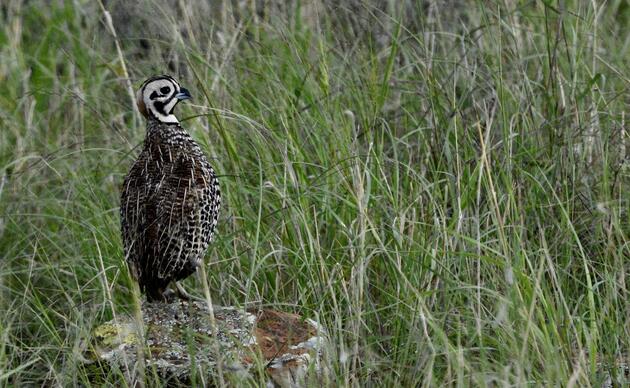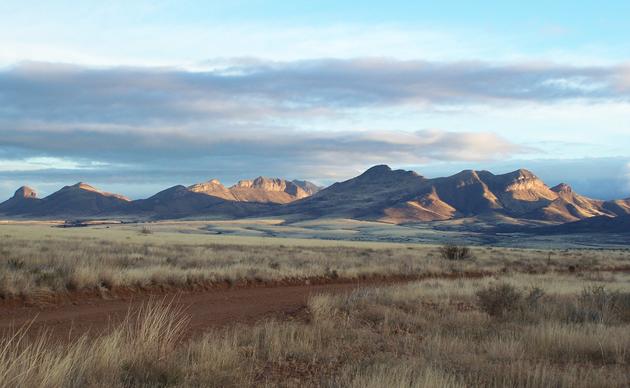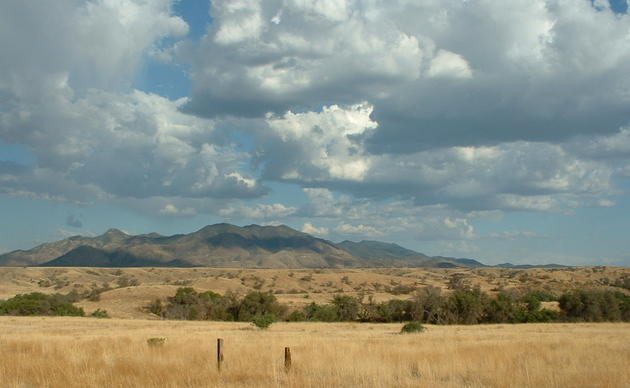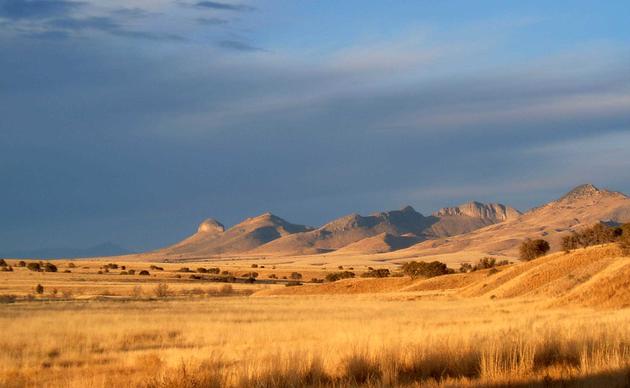History
The Appleton-Whittell Research Ranch of the National Audubon Society (AWRR) was established in 1968 by the Appleton family as a large scale enclosure by which various land uses such as livestock grazing could be evaluated. The AWRR is approximately 60 miles SE of Tucson, Arizona and is managed through a complicated partnership among land owners, federal agencies, and non-profit organizations including the Coronado National Forest, the US Bureau of Land Management, Resolution Copper Company, the Nature Conservancy, and the Research Ranch Foundation. Through agreements with each partner, Audubon manages the AWRR as a sanctuary for native flora and fauna, as an ecological field station at which to study conservation-related questions, and as a place to convene the conservation and land management community. Today, the AWRR is administered through National Audubon’s Southwest office, based in both Arizona and New Mexico.
Land Use History of the Research Ranch
Humans have influenced the ecology of Southwestern North America for millennia in a succession beginning with Indigenous communities. On the AWRR, several chronologies have been suggested, but in general it is recognized that big game hunters arrived approximately 10000 BCE. Other groups followed such as the O'odham, Ópata, and Sobaipuri, and their occupancy overlapped the arrival of Spanish explorers such as Fray Marcos de Niza, Francisco Vasuez de Coronado, Padre Eusebio Kino, and Captain Juan Mateo Manje. Indigenous peoples relied on gathering of native plants, hunting, and limited horticulture in the floodplains. The Apache moved into the area near what is currently the Research Ranch in approximately 1680 CE and had largely replaced other indigenous tribes by the end of the 17th century. The Apache and their allies, combined with malaria (an introduced disease), kept European settlement low until the 1870s.
Large herbivores such as camels, horses, mastodons, and mammoth had largely disappeared by the time the big game hunters arrived, or shortly thereafter. Although bones have been found in archaeological remains that might be bison (Bison bison), the number of sites is small and it is generally accepted that ecological impact of these large herbivores did not extend westward much beyond the Pecos River. Consequently, the grasslands of the area did not co-evolve with the pressures of large herds of large herbivores. Domestic livestock were not thought to have significant impact on the landscape under Spanish or Mexican rule.
The Gadsen Purchase of 1853/54 transferred ownership from Mexico to the United States, but relatively little changed in respect to land management until after the Civil War when the actions of the American military and colonization by Americans paved the way for a large livestock industry. A combination of factors, including ignorance of the climate and ecology of the region, led to a series of overgrazing events in the late nineteenth and early twentieth centuries which resulted in loss of topsoil, changes in hydrology, and the realization that the grasslands of the Southwest present unique challenges to ranchers. Much of the modern management of the prairies has sought to strike a balance between ranching, which is seen as an economic necessity, with the natural values of a landscape that has little to no defenses against grazing by domestic livestock.
The area now known as the AWRR was homesteaded by numerous individuals including T. B. Titus, Wm. Roth, James L. Finley, Juan Telles, Francis Cuthbert Fenderson, Willard T. Roath, and John D. Riggs, many of whom were already present when the federal lands were surveyed in 1912. In the mid-20th century, Frank and Ariel Appleton purchased the deeded land and grazing allotments of the Clark and the Swinging H ranches (approximately 8,000 acres total) and created the Elgin Hereford Ranch. By the late 1960s, the Appletons had determined the could play a larger purpose than as a small cattle ranch. In 1968, they sold their cattle and converted the ranch into a research facility to serve as a reference area and control site to evaluate large scale land uses, including but not limited to grazing by domestic livestock. The Appletons formed a non-profit organization, The Research Ranch Inc. (later named the Research Ranch Foundation), to administer the facility. The Forest Service and the Arizona State Land Department agreed to suspend grazing on the allotments held by the Appletons.
In the late 1970s, the Appletons sought a conservation organization to take over management of the AWRR to ensure the longevity of the facility. Audubon had become concerned about the decrease in population of birds that were dependent on grasslands, so accepted management responsibilities in 1980 under conditions outlined in a Memorandum of Agreement between Audubon and The Research Ranch Foundation. The Appletons donated over half of their private land to The Research Ranch Foundation and later it transferred to Audubon. The Whittell Foundation established an endowment wit hin Audubon, distributions from which are used solely to support the AWRR. At this time, the name of the ecological field station was changed to the Appleton-Whittell Research Ranch of the National Audubon Society, Inc.
In 1982, Audubon entered into a Memorandum of Understanding with the Forest Service for management of grazing allotments within the Coronado Ranger District known as Chuney 1 and 2. A portion of these allotments within the Research Ranch has been designated the Elgin Research Natural Area. Later, Audubon took over the leases of the Arizona State Trust Lands formerly managed by the Appletons. By 1986, the Bureau of Land Management acquired title of the State Trust Lands within the AWRR plus additional property owned by Frank Appleton and signed a Cooperative Agreement with Audubon regarding management of these parcels. Land administered by Bureau of Land Management within the boundary of the AWRR has been declared the Appleton-Whittell Research Area of Critical Environmental Concern and is included in the Las Cienegas Natural Conservation Area. Adding to the property, in 2004 Audubon and The Nature Conservancy of Arizona entered into a Memorandum of Understanding assigning management responsibilities of a parcel owned by The Nature Conservancy but within the AWRR and disconnected from their nearby Canelo Hills Cienega Preserve. Upon the passing of Ariel Appleton, the Appleton children sold all remaining parcels held with clear title to Resolution Copper Mining Co., a subsidiary of Rio Tinto Mining doing business as Swift Current Land and Cattle Company. Audubon and Resolution Copper developed a management agreement in 2008 regarding these properties.
Additional details of the land use and certain land transactions of the Research Ranch are described in Conrad Bahre’s “Land-use History of the Research Ranch, Elgin, Arizona,” (1977) and by Glendon Collins in “A History of the Lands in the National Audubon Society’s Research Ranch near Elgin, in Santa Cruz County, Arizona,” (2008). Copies of each are housed in the Research Ranch library and are available in digital form in the website library under Literature Associated with AWRR.
Connect with the Research Ranch
Support to Our Fellowship Programs
Your gift to our fellowship programs will ensure that student scientists will receive Fellowships to encourage and support their research.
Volunteer your Time
The Research Ranch is a truly unique place that stirs great feelings in those lucky enough to be involved. Please contact us for details about our organized volunteer program.
Living Gently on the Land
If you want to conserve native wildlife and habitat, “Living Gently on the Land” will help you understand and protect the plants, animals and landscapes of the Southwest.




